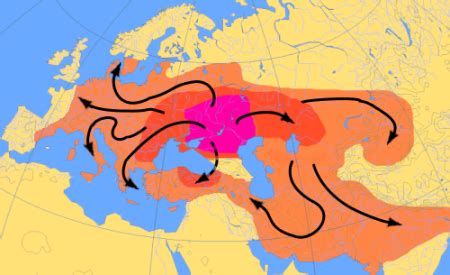In the tapestry of human existence, population and migration patterns have profoundly shaped our world, influencing everything from cultural diversity to economic growth. Unit 3 of AP Human Geography delves into these intricate dynamics, exploring the factors influencing population growth and the reasons behind the movement of people across geographical boundaries.

Factors Influencing Population Growth
Population growth is a critical concept in human geography, with its rate and patterns having far-reaching implications. The following factors play a pivotal role in determining population growth:
-
Birth Rates: The number of births per 1,000 people in a given year significantly impacts population growth. Factors such as cultural norms, access to healthcare, and economic prosperity influence birth rates.
-
Death Rates: The number of deaths per 1,000 people in a given year is another crucial factor. Improvements in healthcare, nutrition, and sanitation have led to declining death rates in many parts of the world.
-
Migration: The movement of people across national borders or within a country can alter population growth rates. Immigration can increase population size, while emigration can decrease it.
-
Natural Increase Ratio: This indicator represents the difference between birth rates and death rates, providing insight into the rate of natural population growth.
Types and Patterns of Migration
Migration involves the permanent or semi-permanent movement of people from one place to another. Various types and patterns of migration exist, including:
-
Internal Migration: The movement of people within the same country. This often occurs for economic opportunities, education, or family reasons.
-
International Migration: The movement of people across national borders. This can be driven by economic, political, environmental, or social factors.
-
Forced Migration: The involuntary movement of people due to factors such as war, persecution, or natural disasters. This can lead to refugee crises and humanitarian emergencies.
-
Circular Migration: The temporary movement of people between two or more destinations, often for seasonal work or education.
Economic and Social Impact of Migration
Migration has profound economic and social implications for both sending and receiving countries.
-
Economic Impact: Migration can contribute to economic growth by providing labor, skills, and investment. However, it can also lead to competition for jobs and resources.
-
Social Impact: Migration can enrich cultural diversity, introduce new perspectives, and strengthen social networks. However, it can also create tensions and challenges related to integration and social cohesion.
Common Mistakes to Avoid
In studying population and migration patterns, it is essential to avoid common mistakes:
-
Oversimplifying Factors: Population growth and migration patterns are influenced by a complex interplay of factors. Avoid reducing them to a single cause or overemphasizing certain factors.
-
Ignoring Spatial Patterns: Population and migration patterns often vary across different geographical areas. Consider the spatial distribution of these dynamics and how they impact specific regions or countries.
-
Lack of Perspective: When examining migration trends, it is crucial to consider the perspectives of both sending and receiving countries. This helps provide a balanced understanding of the motivations, challenges, and benefits associated with migration.
Why Population and Migration Patterns Matter
Understanding population and migration patterns is essential for addressing global challenges and shaping human development policies.
-
Urbanization: Rapid population growth in urban areas poses challenges related to housing, infrastructure, and service provision.
-
Demographic Shift: Changing age structures and increasing life expectancies have implications for healthcare, pensions, and labor markets.
-
Climate Change: The displacement of populations and potential migration due to climate change and environmental disasters require proactive planning and adaptation strategies.
-
Cultural Diversity: Migration contributes to cultural exchange and diversity, enriching societies and fostering cross-cultural connections.
-
Economic Development: Balancing population growth and migration can optimize human capital, support economic growth, and reduce poverty.
How Unit 3 of AP Human Geography Benefits Students
Studying Unit 3 of AP Human Geography offers numerous benefits for students:
-
Global Perspective: It provides a comprehensive understanding of population and migration patterns, fostering a global perspective and appreciation for human diversity.
-
Analytical Skills: It develops students’ ability to analyze data, identify trends, and draw informed conclusions about population and migration dynamics.
-
Informed Decision-Making: By understanding these patterns, students gain the knowledge and skills to make informed decisions about issues related to population growth, migration, and human development.
-
Career Opportunities: Gaining expertise in population and migration patterns opens up career opportunities in fields such as international development, public health, and human rights.
Engage the Experts
To delve deeper into these topics and gain expert insights, consider engaging with the following organizations:
-
United Nations Population Fund (UNFPA): Provides a wealth of data and resources on population and migration patterns worldwide.
-
International Organization for Migration (IOM): Offers a comprehensive understanding of migration dynamics and provides support to migrants and refugees.
-
World Bank: Conducts research and provides financial assistance to address global population and migration challenges.
-
Pew Research Center: Focuses on international surveys and research on population and migration trends.
-
International Institute for Population Sciences (IIPS): Provides data, analysis, and research on population and migration patterns in India.
Conclusion
Unit 3 of AP Human Geography serves as a cornerstone in understanding the complexities of population growth and migration patterns. By examining the multifaceted factors influencing these dynamics and exploring their economic and social implications, students gain valuable insights into one of the most pressing issues facing the world today. Embracing a global perspective and critical thinking skills, they are empowered to make informed decisions and contribute to shaping human development policies that foster equity, sustainability, and human well-being.
